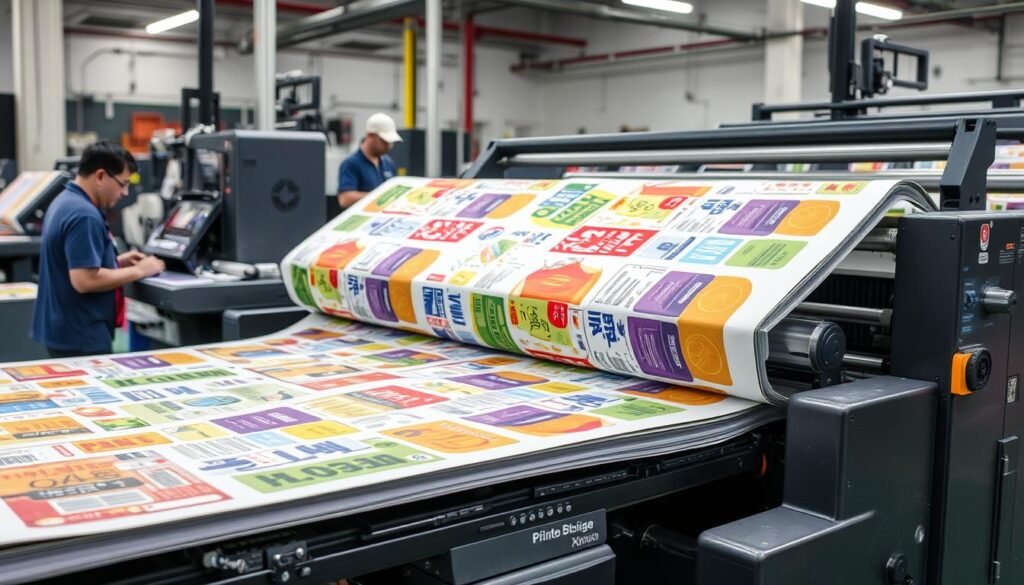The world of printing has witnessed significant advancements over the years, with the transition from conventional plates to Computer-to-Plate (CTP) technology being one of the most notable developments. Understanding the difference between CTP and conventional plates is crucial for anyone involved in the printing industry, especially marketing professionals who aim to leverage the most efficient and cost-effective printing solutions.

Introduction to Printing Plates
Printing plates are a vital component in the offset printing process. They serve as the medium that transfers the ink onto the printing substrate, ultimately producing the final printed product. There are two primary types of plates used in the industry: conventional plates and CTP plates.
What are Conventional Plates?
Conventional plates refer to the traditional method of creating printing plates, which involves the use of film negatives and chemical processes. This method has been widely used for decades and is known for its reliability and consistency in producing high-quality prints.
Process of Making Conventional Plates
The creation of conventional plates involves several steps, including the preparation of film negatives, the exposure of plates to light, and the chemical development process. This method requires skilled technicians and a controlled environment to ensure accuracy and precision.
Advantages of Conventional Plates
Despite being an older technology, conventional plates have their own set of advantages. They are known for their durability and ability to produce high-resolution prints. Additionally, the cost of implementing conventional plates is often lower compared to CTP technology.
Limitations of Conventional Plates
However, conventional plates come with certain limitations. The process is time-consuming, requiring multiple steps and skilled personnel. Additionally, the reliance on chemical processes raises environmental concerns and increases operational costs.
What is CTP Technology?
CTP technology represents a modern approach to plate-making, eliminating the need for traditional film negatives and chemical processing. Instead, the digital file is directly transferred to the printing plate using a laser imaging system.
Process of Creating CTP Plates
The process of creating CTP plates is streamlined and efficient. It involves the use of advanced software to prepare the digital file, which is then sent to a CTP device. The laser imaging system precisely transfers the image onto the plate, ready for printing.
Advantages of CTP Plates
The primary advantage of CTP technology is its efficiency. It reduces the time and labor involved in plate-making, resulting in faster turnaround times and increased productivity. Furthermore, CTP technology offers superior image quality and consistency, making it ideal for high-volume printing projects.
Limitations of CTP Plates
While CTP technology offers numerous benefits, it is not without its challenges. The initial investment cost for CTP equipment is relatively high, which may deter small printing businesses from adopting this technology. Additionally, CTP plates may not be as durable as conventional plates, especially for long print runs.
Comparing CTP and Conventional Plates
To fully understand the difference between CTP and conventional plates, it is essential to compare their key characteristics.
Cost Considerations
The cost implications of adopting CTP technology versus conventional plates are a significant factor for printing businesses. While CTP technology requires a higher initial investment, it offers long-term savings in terms of reduced labor and faster production times. On the other hand, conventional plates have lower upfront costs but may incur higher ongoing expenses due to the need for skilled labor and chemical processes.
Quality and Consistency
When it comes to print quality and consistency, CTP technology holds a distinct advantage. The digital nature of CTP plates ensures superior image resolution and color accuracy, making them ideal for projects that demand precision and detail. However, conventional plates are still capable of producing high-quality prints, especially for projects that do not require intricate details.
Environmental Impact
Environmental considerations are increasingly important in today’s printing industry. CTP technology is more environmentally friendly compared to conventional plates, as it eliminates the need for chemical processing and reduces waste. This makes CTP technology an attractive option for businesses looking to minimize their environmental footprint.
Workflow and Efficiency
In terms of workflow and efficiency, CTP technology offers significant advantages. The streamlined process of creating CTP plates reduces production times and minimizes the risk of errors, leading to increased efficiency and productivity. Conventional plates, on the other hand, require more time and resources, which can slow down the overall workflow.
Conclusion
In conclusion, the difference between CTP and conventional plates lies in their respective processes, costs, quality, and environmental impact. While conventional plates have been relied upon for decades, CTP technology represents a modern and efficient alternative that offers numerous benefits for printing businesses. Marketing professionals and printing businesses must carefully consider their specific needs and budget constraints when deciding between these two options.
For more information on printing technology, you can visit this comprehensive glossary on offset printing, or learn more about the differences between offset printing and laser printing.

FAQs
What is the main advantage of CTP technology?
CTP technology offers superior image quality and consistency, faster production times, and reduced labor costs, making it a highly efficient printing solution.
Are conventional plates still used in printing?
Yes, conventional plates are still used in printing, particularly for projects that do not require high precision and where lower upfront costs are a priority.
Is CTP technology environmentally friendly?
Yes, CTP technology is more environmentally friendly than conventional plates, as it eliminates the need for chemical processing and reduces waste, contributing to a greener printing process.
This article contains affiliate links. We may earn a commission at no extra cost to you.






